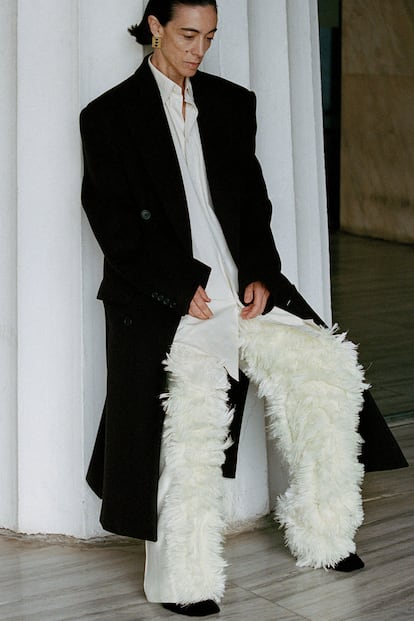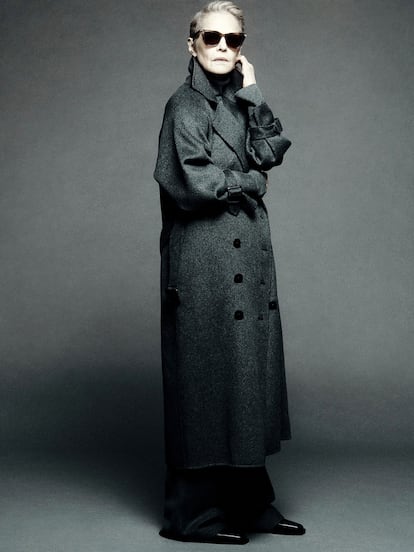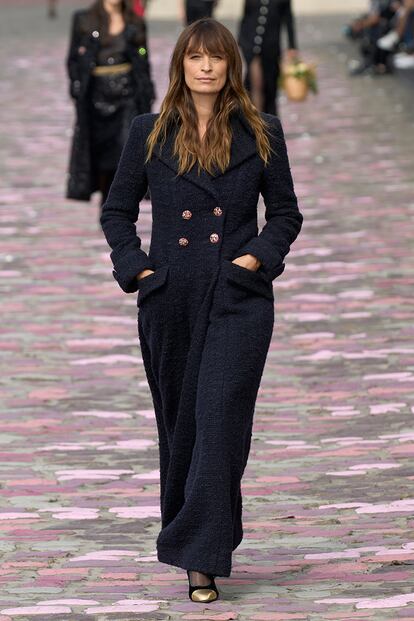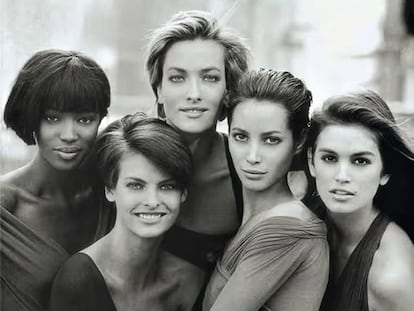The problem of fashion for women over 50
Although the segment accounts for almost half the market, the industry still has communication issues when it comes to winning over this demographic

The youngest millennials have already turned 40. This group — Gen Y — who were going to inherit the reins of the fashion industry, are already old in the eyes of the Zoomers. This demographic has brought Gen Y’s aspirations to a halt, including their dreams for their wardrobe. Of course, a decade from now, the youngest Zoomers will be around 35, and they will be considered even more ancient, given how the perception of age advances among the new generations. In any case, the clothing business has already done its math and knows perfectly well what to expect: in the next 20 years, spending by those over 50 will exceed $16 billion (according to a study by the consulting firm Kantar). And everybody knows that, in truth, fashion is inherited by those who can afford it.

The numbers have been there for a long time, even if they vary depending on the source and are sometimes not easy to find. A highly publicized report from the International Longevity Center Global Alliance, for instance, caused a stir in 2020 by revealing that the “shameful marginalization” of older consumers could cost the fashion and beauty industries approximately $13 billion in two decades. As if both sectors were not aware of the purchasing power of that demographic, which currently represents between 45% and 50% of the market, more than any other.
A recent survey by the British blog Is This Mutton? on the consumption habits of women in their fifties from countries as diverse as Italy, Portugal, Canada, Australia and the United States, revealed that more than half believe that they are more style-conscious now than when they were in their twenties, while 68% say they go shopping at least once a week. However, the numbers also make it clear why fashion and cosmetics seem to avoid those with gray hair in their messages: millennials and Zoomers are splitting the pie in the luxury segment, valued at approximately $215 billion, as responsible for a far from negligible 15% of an expense that could double in 2026, according to the True Luxury Global Consumer Insight 2023 report from the Altagamma Foundation (the lobby that brings together the key figures of Italian exclusivity) made by the Boston Consulting Group.

A plot twist
Another revealing fact emerges from all the statistical racket: most of these studies, reports and surveys base their market prospects on the future, referring to “the next decade” or “this or that year”; that is, when the youth of today will no longer be so young. With its almost supernatural ability to predict future consumer demands, the fashion industry seems more in tune than ever with that notion. In October, Blumarine fired Nicola Brognano (born in 1990) as creative director, after four years in which he put the brand back on the map of general interest as the main supporter of the Y2K revival in the luxury arena. The 2000s teenage aesthetic gained the support of celebrities such as Dua Lipa, Kylie Jenner, Hailey Baldwin and Ariana Grande, as well as a prominent place under the spotlight. However, now that Eccellenze Italiane Holding, the owner of the brand since November 2019, plans to go public, there has been a — more profitable — plot twist: his replacement, Walter Chiapponi, 45, comes from working at Bottega Veneta and Tod’s, a resume with which Marco Marchi, the CEO of EIH, expects him to honor “the firm’s extraordinary legacy.” And no, he does not mean the butterfly tops and low-rise jeans of the last eight seasons.
At a time, once again, of financial uncertainty (the income statements of clothing companies are showing the effects of inflation, with the downward consumption of clothing and accessories reflected in the current fiscal year), designers and brands are choosing to leave the revolutions out of their lines; hence those collections with high commercial potential that we have seen on the latest catwalks, much less intended to appeal to young people. This phenomenon had been seen since the arrival of Matthieu Blazy at Bottega Veneta, and its presence was felt at the latest Milan Fashion Week with the debut of Sabato de Sarno at Gucci, who in one fell swoop got rid of all traces of the centennial magical chaos imposed by his predecessor, Alessandro Michele. The long-awaited return of Phoebe Philo, with her own label, confirmed the trend at the end of October. The British creator also addressed the situation with a branding exercise expressly aimed at women over 40. Which is still not the norm, either: on the runway, in catalogs and in advertising campaigns, those under 30 win.
As is the case of color, size or gender dissidence, the problem of fashion for older people is one of representation. Older consumers do not see themselves in the images that fashion companies project, nor are they engaged by their way of communicating their products. Hence the frustration.
However, that does not mean that the industry has forgotten about them. Since the famous appearance of the octogenarian Joan Didion in Phoebe Philo’s Céline in 2015, the clothing business has not been afraid of wrinkles — if it ever was — regardless of how widespread the cult to youth has been since the 1960s. Right now, we have women like Charlotte Rampling (with Massimo Dutti at 77), Maggie Smith (the sensation of Loewe at 88), Maye Musk (a cosmetics influencer at 75) and Caroline de Maigret (walking in Chanel haute couture) showing the intergenerational possibilities of collections of different sorts and conditions. True, they are a minority, and if they attract attention it is precisely because of their rarity. An exception that, in an increasingly aging society — at least as far as the West is concerned — makes less and less sense. Of course, Karl Lagerfeld already said it: fashion has never been democratic. And that includes age.

Sign up for our weekly newsletter to get more English-language news coverage from EL PAÍS USA Edition
Tu suscripción se está usando en otro dispositivo
¿Quieres añadir otro usuario a tu suscripción?
Si continúas leyendo en este dispositivo, no se podrá leer en el otro.
FlechaTu suscripción se está usando en otro dispositivo y solo puedes acceder a EL PAÍS desde un dispositivo a la vez.
Si quieres compartir tu cuenta, cambia tu suscripción a la modalidad Premium, así podrás añadir otro usuario. Cada uno accederá con su propia cuenta de email, lo que os permitirá personalizar vuestra experiencia en EL PAÍS.
¿Tienes una suscripción de empresa? Accede aquí para contratar más cuentas.
En el caso de no saber quién está usando tu cuenta, te recomendamos cambiar tu contraseña aquí.
Si decides continuar compartiendo tu cuenta, este mensaje se mostrará en tu dispositivo y en el de la otra persona que está usando tu cuenta de forma indefinida, afectando a tu experiencia de lectura. Puedes consultar aquí los términos y condiciones de la suscripción digital.
More information
Archived In
Últimas noticias
A hybrid building: Soccer pitch, housing, and a shopping mall
Europe urges Trump to respect Greenland following annexation threats
Science seeks keys to human longevity in the genetic mixing of Brazilian supercentenarians
Luisa Neubauer, climate change activist: ‘Ecology shouldn’t be a punitive force, but a joyful and liberating one’
Most viewed
- Alain Aspect, Nobel laureate in physics: ‘Einstein was so smart that he would have had to recognize quantum entanglement’
- Mexico’s missing people crisis casts a shadow over World Cup venue
- Alvin Hellerstein, a 92-year-old judge appointed by Bill Clinton, to preside over Maduro’s trial in New York
- Why oil has been at the center of Venezuela-US conflicts for decades
- Cuba confirms death of 32 of its citizens in the US attack against Venezuela










































